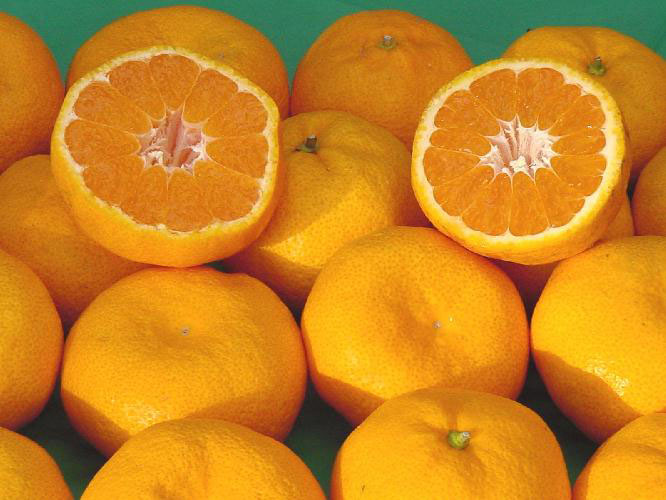Satsuma mandarins (Citrus unshiu Marc.) are among the most cold hardy citrus varieties that have sufficient fruit quality for potential commercial marketing as well as for homeowners outside the typical citrus belt in the Lower Rio Grande Valley (Mortensen, 1983). Satsuma mandarin was first reported in Japan more than 700 years ago where it is now the major cultivar grown, but more than likely it originated in China (Ferguson, 1996).

The first recorded introduction into the United States was in Florida by George R. Hall in 1876 (Ferguson, 1996). The name “satsuma” is credited to the wife of the United States minister to Japan, General Van Valkenberg, who sent trees home in 1878 from Satsuma where it was believed to have originated (Ferguson, 1996). While this fruit is grown primarily for fresh consumption, a portion of the crop is canned as fruit segments or juice in Japan, China and Spain. In these countries, deeply colored juice is blended with orange juice to improve color or sold as single-strength tangerine juice. Fresh fruit is also imported into Canada and non-citrus producing areas of the U.S., where it is the earliest seasonal citrus crop to reach the market (Ferguson, 1996). Approximately one million ‘Owari’ satsuma trees were imported from Japan (1908-1911) and planted throughout the lower Gulf Coast states from the northern Florida Gulf coast to Texas, where an extensive tangerine industry developed (Ferguson, 1996).
The earliest citrus in Texas was from seed planted in dooryards by the early settlers (Mortensen, 1983). The coastal area near Houston and Beaumont had a citrus “boom” until February, 1911, when the temperature dropped to 8oF at Alvin. Most growers were lucky to save 10 percent of their trees. This was followed by the 1915 hurricane, so the Texas Orchard Development Company moved its operations to the Lower Rio Grande Valley where a railroad had recently been built. The Texas Experiment Station at Beeville was also growing citrus and reported success with satsumas in a publication in 1909. There were an estimated 800 acres of trees in the Winter Garden (Uvalde-Crystal City-Pearsall) in 1945. (Mortensen, 1983).
Satsumas have been observed to tolerate temperatures of 12 to 14 degrees F. without injury if trees are totally dormant and the temperature doesn’t remain there more than 3 hours (Ferris and Richardson; 1923, Mortensen, 1983; Ferguson, 1996). Most of the commonly grown citrus such as grapefruits, oranges and satsumas, can withstand prolonged exposure to temperatures of 23 degrees F. For every ten hours’ exposure to temperatures under 23 degrees F., there is a three-inch increase in diameter of wood that is killed. Satsumas do freeze more slowly at first, but in severe freezes over a long period of time show exactly the same response as other oranges or mandarins. Because of their low total heat requirement, some satsuma cultivars ripen earlier than most other citrus. Hence, the satsuma is ideally adapted to regions with winters too cold for most citrus fruit but with growing seasons warm enough to produce fruit of early maturity and good quality. (Ferguson, 1996).
For Further Reading
1. Ferguson, J. J. 1996. The Satsuma Tangerine. University of Florida Fact Sheet. HS 195.
2. Ferris, E. B. and F. B. Richardson. 1923. The Satsuma Orange in South Mississippi. Ms. Ag. Exp. Sta. Bul. No. 217.
3. IVIA (Valencia Institute for Agricultural Research). 1987. Mandarin Tree Varieties-Okitsu. Moncada, Valencia, Spain.
4. Mortensen, Ernest. 1983. Personal communication.
5. Royal Horticulture Color Chart, The Royal Horticulture Society.
6. Sauls, J.W. 1998. Citrus; Texas Cooperative Extension, The Texas A & M University System.